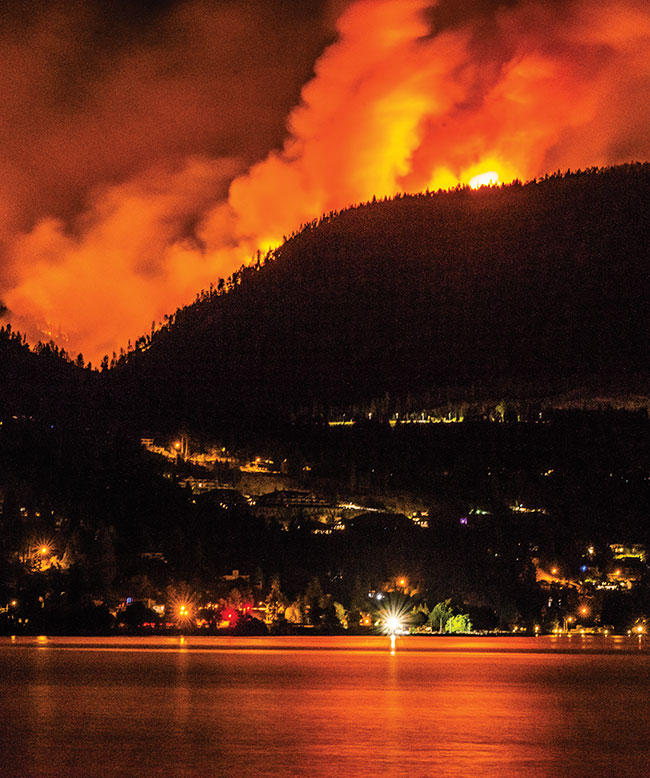
Features
Emergency & disaster management
Comment: A wild year for wildfires
July 24, 2023
By
Laura Aiken
 Climate change, land use and population change are significant contributors to the increase in wildfires. Photo credit: Mike Biden
Climate change, land use and population change are significant contributors to the increase in wildfires. Photo credit: Mike Biden Well, the world on fire that we have talked about for decades appears to have made a loud entrance in 2023. Can’t recall the air ever tasting like an ashtray in Southern Ontario due to wildfire smoke. Toronto achieved “worst air quality in the world” ratings on June 28. It’s been a budget busting, all hands-on-deck, blockbuster of a wildfire season.
Except it’s not a movie, and even though technology like drones and sophisticated programs courtesy of the U.S. Pentagon have come into play, it’s not a video game either. It’s real destruction of homes, of upended evacuated lives. Of a largely volunteer fire service keeping up response and of efforts to train more people in wildland fire fighting. See Chief Vince MacKenzie’s Volunteer Vision column on page 30 for more of the impacts on the departments responding outside the larger urban centres.
Canada may remain dependent on foreign firefighters for some time, as Prime Minister Justin Trudeau put forth, but Canada also helps abroad. We were on planes to help with Australia’s bushfire crisis in 2020. Is this really going to cut the mustard long term if this is the “new normal” that we may be dealing with or do Canadian fire departments need more funding to be prepared for response? Canada and the U.S. inked a new mutual aid deal, but what if both are extended in their resources at the same time? (Perhaps a large what-if, but nonetheless).
I found a paper online from the Canadian Council of Forest Ministers called “Canadian Wildland Fire Strategy, A 10 year review and renewed call to action”, dated 2016. In 2021, another paper was produced by the group called Action Plan 2021-2026. There were five key action items, and one centred around enhancing capacity for preparedness and response. It summarized: “As wildland fire conditions continue to change rapidly, traditional response and suppression tactics are becoming less effective while agencies are being taxed beyond their collective capabilities.
This is despite the fact that wildland fire response (i.e., suppression) activities have received the bulk of investment over recent decades. Enhancing wildland fire preparedness will improve capacity for response and includes increasing pan-Canadian, regional and local capabilities to effectively predict, identify and respond to new wildland fire starts, increasing interoperability and investing in training and exercises.”
A core message was the creation of an integrated wildland fire approach that crosses jurisdictional boundaries involving all levels of government.
We are halfway through the action plan’s timeline. Are we operating at a high level of coordinated national response? Now that we are truly in the thick of it, these sentiments require reflection to see if the path envisioned is indeed the path attained.
Print this page
Advertisement
- Memorial for fallen B.C. wildfire fighter held in Revelstoke
- Searchers continue to pump floodwater from Nova Scotia field in search of four missing people